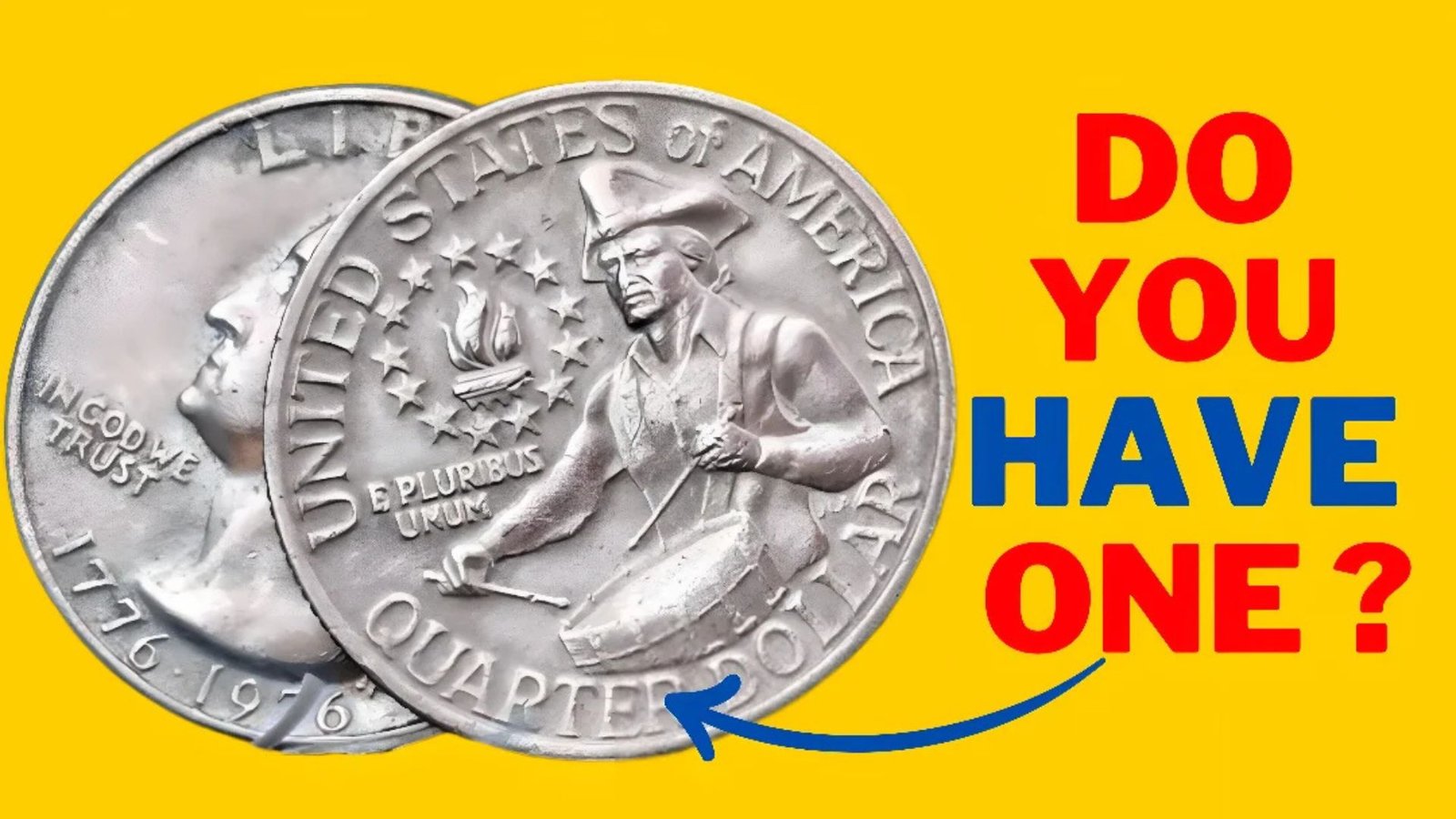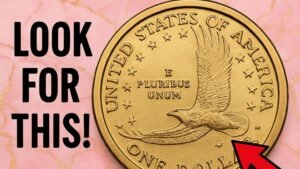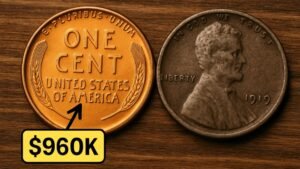Have you ever checked your pocket change and wondered if a simple penny could be worth a fortune? The Lincoln Wheat Penny, a small coin minted between 1909 and 1958, might just be hiding a treasure worth up to $144,000! Some rare versions of this penny have sold for jaw-dropping amounts at auctions, sparking excitement among coin collectors and everyday people alike. The big question is: could one of these valuable pennies still be out there, sitting in your change jar or passing through your hands at the grocery store? Let’s dive into the fascinating world of the Lincoln Wheat Penny and learn how to spot a potential jackpot.
What Is the Lincoln Wheat Penny?
The Lincoln Wheat Penny, also called the Lincoln Cent, is a one-cent coin produced by the U.S. Mint from 1909 to 1958. It was created to celebrate the 100th anniversary of President Abraham Lincoln’s birth. The front of the coin shows Lincoln’s portrait, while the back features two wheat stalks, giving it the name “Wheat Penny.” Designed by Victor David Brenner, it was the first U.S. coin to feature a real person, making it a piece of history.
While billions of these pennies were made, some are incredibly rare due to specific years, mint marks, or errors during production. These rare versions can be worth thousands or even millions, turning a simple penny into a collector’s dream.
Why Are Some Wheat Pennies So Valuable?
The value of a Lincoln Wheat Penny depends on a few key factors: rarity, condition, material, and minting errors. Here’s why some pennies stand out:
- Rarity: Pennies from certain years or mints were produced in smaller numbers, making them harder to find.
- Condition: Coins in excellent condition, with clear details and no wear, are worth more.
- Material: During World War II, most pennies were made of steel to save copper for the war effort. However, a few 1943 pennies were mistakenly made of copper, making them extremely rare.
- Minting Errors: Mistakes like double-stamped designs or missing mint marks can make a penny unique and valuable.
For example, a 1943 copper Lincoln Wheat Penny sold for $144,000 at auction because only a handful were accidentally made. Stories like this fuel the excitement that one of these treasures might still be in circulation.
The Famous 1943 Copper Penny
One of the most famous Lincoln Wheat Pennies is the 1943 copper penny. In 1943, the U.S. Mint switched to zinc-coated steel for pennies to conserve copper for wartime needs. However, a small number of copper pennies were mistakenly produced that year. These rare coins are now some of the most valuable in U.S. history.
In 1947, a teenager named Don Lutes found one of these 1943 copper pennies in his change after buying lunch at his school cafeteria. Decades later, it sold for $204,000 at auction! Experts believe only 15 to 20 of these coins exist, and some could still be out there, waiting to be discovered.
How to Spot a Valuable Wheat Penny
Finding a rare Lincoln Wheat Penny isn’t just luck—it takes a keen eye. Here’s what to look for:
- Year: Check the date on the coin. Key years like 1909-S, 1914-D, 1931-S, or 1943 (copper) are especially valuable.
- Mint Mark: Look for a small letter below the year. “S” (San Francisco), “D” (Denver), or no mint mark (Philadelphia) can affect value. For example, the 1909-S VDB penny is a collector’s favorite.
- Condition: Coins in “mint” or near-perfect condition are worth more. Avoid cleaning your coins, as this can lower their value.
- Errors: Look for mistakes like doubled letters or numbers (e.g., the 1955 Doubled Die penny) or unusual materials (e.g., 1943 copper).
If you think you’ve found a rare penny, test it with a magnet. Steel pennies from 1943 will stick to a magnet, but the rare copper ones won’t. Always have a professional coin dealer or grading service check your coin to confirm its authenticity and value.
Could These Pennies Still Be in Circulation?
Yes, it’s possible! While most Lincoln Wheat Pennies are now in collections or museums, some still turn up in change, old coin rolls, or forgotten jars. Since they were minted as everyday money, not all were collected or recognized as valuable. Stories of people finding rare pennies in their pocket change keep the hope alive that a life-changing coin could be hiding in plain sight.
Valuable Lincoln Wheat Pennies to Look For
| Year | Mint Mark | Key Feature | Estimated Value |
|---|---|---|---|
| 1909-S | VDB | Designer’s initials on reverse | $1,000–$10,000+ |
| 1914-D | D | Low mintage | $200–$5,000+ |
| 1931-S | S | Low mintage | $100–$3,000+ |
| 1943 | None/S/D | Copper (not steel) | $50,000–$144,000+ |
| 1955 | None | Doubled Die error | $500–$20,000+ |
Note: Values depend on condition and market demand. Always consult a professional for appraisal.
Tips for Coin Hunters
Ready to start your treasure hunt? Here are some easy tips to increase your chances of finding a valuable Lincoln Wheat Penny:
- Check Your Change: Look closely at every penny you get from stores, vending machines, or bank rolls.
- Search Old Collections: Ask family members if they have old coin jars or inherited collections.
- Visit Coin Shops: Local dealers often have Wheat Pennies for sale or can help identify rare ones.
- Join Coin Clubs: Connect with other collectors to learn more and share tips.
- Be Patient: Finding a rare penny takes time, but the thrill of the hunt is worth it!
Conclusion
The Lincoln Wheat Penny is more than just a coin—it’s a piece of American history with the potential to change your life. While most pennies are worth just one cent, rare versions like the 1943 copper penny could be worth $144,000 or more. The idea that one of these treasures might still be in circulation makes checking your change an exciting adventure. So, next time you get a handful of coins, take a closer look—you might just find a fortune hiding in your pocket!
FAQ: Lincoln Wheat Penny
How do I know if my penny is valuable?
Check the year, mint mark, and condition. Look for rare years like 1909-S, 1914-D, 1931-S, or 1943 copper pennies. Have a professional coin dealer or grading service evaluate it.
Are all Wheat Pennies worth a lot?
No, most are worth only a few cents. Only specific years, mint marks, or error coins have high value due to their rarity.
Can I still find a 1943 copper penny in circulation?
It’s rare but possible. Some have been found in change or old collections, so keep checking your pennies!
What should I do if I find a rare penny?
Don’t clean it, as this can reduce its value. Store it safely and take it to a professional coin dealer or grading service for authentication.
Where can I learn more about coin collecting?
Visit websites like APMEX (learn.apmex.com) or join local coin clubs to connect with experts and collectors





2 thoughts on “The $144K Lincoln Wheat Penny: Could It Be in Your Pocket?”